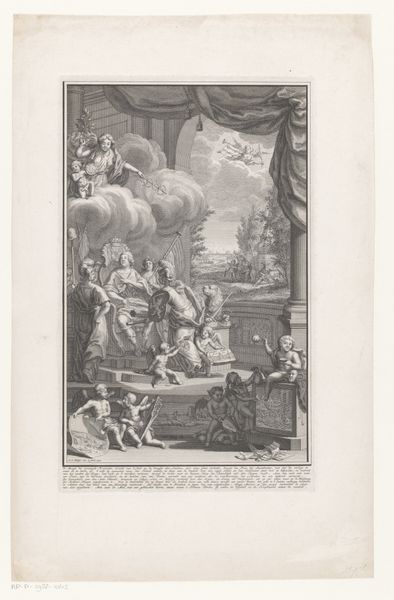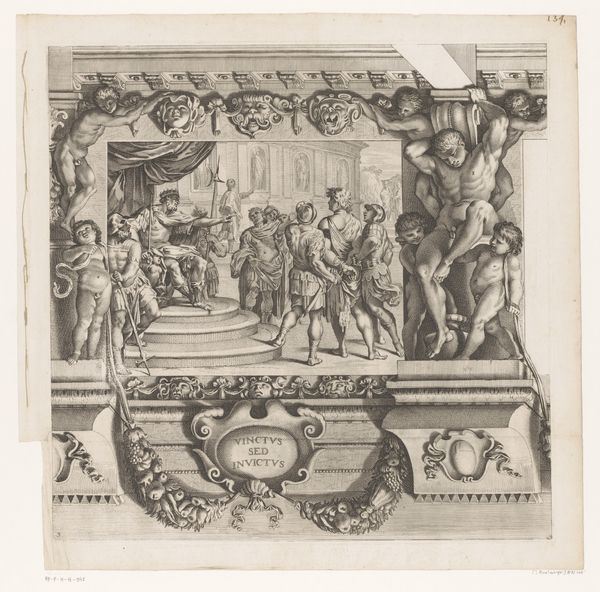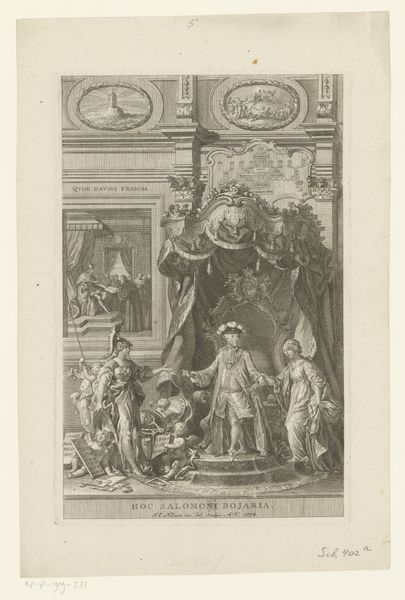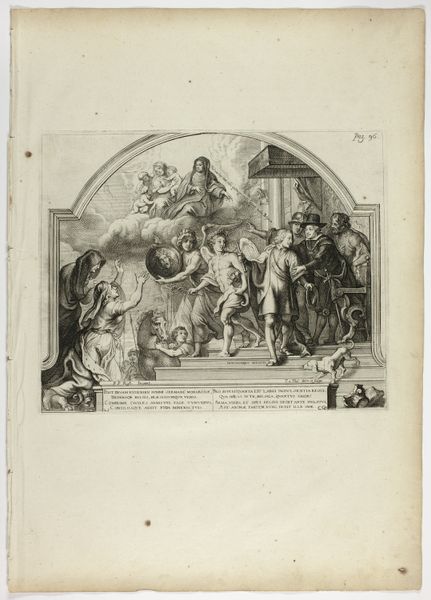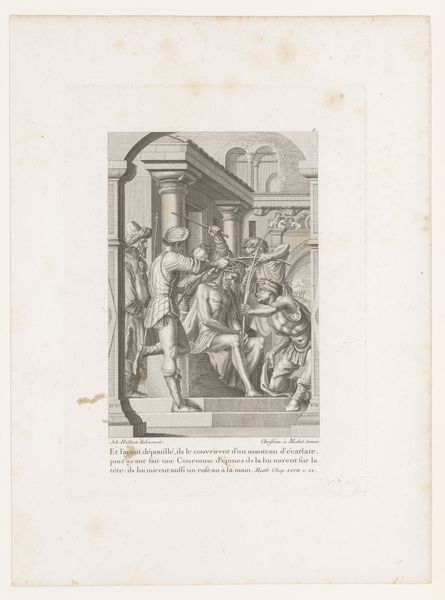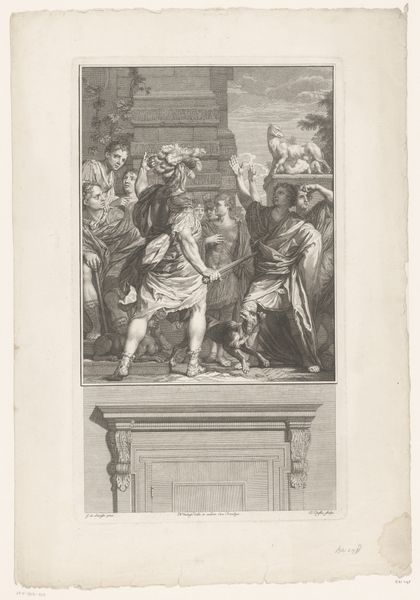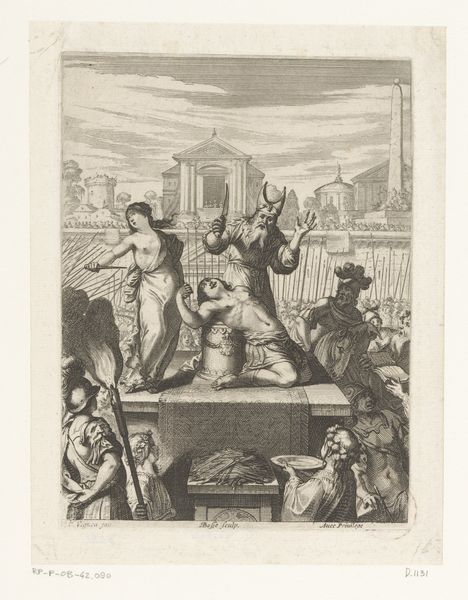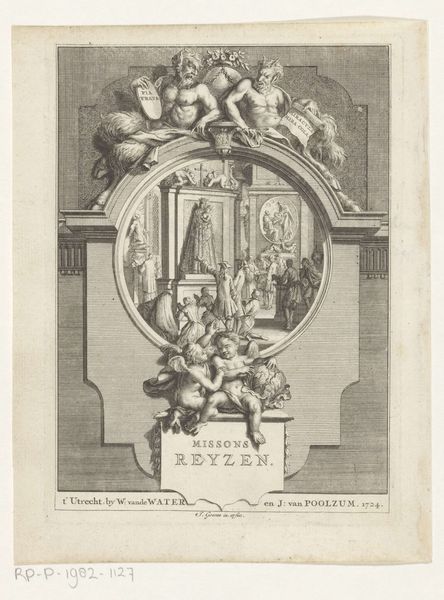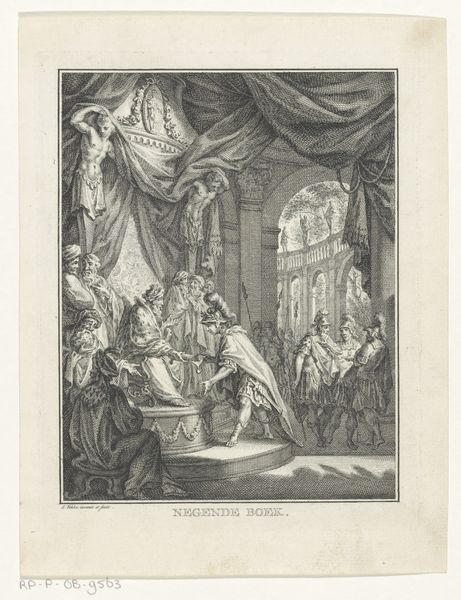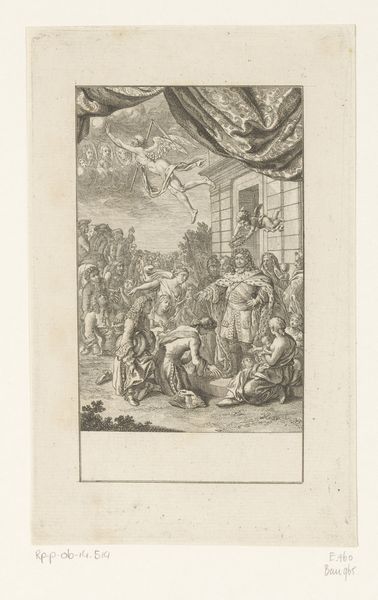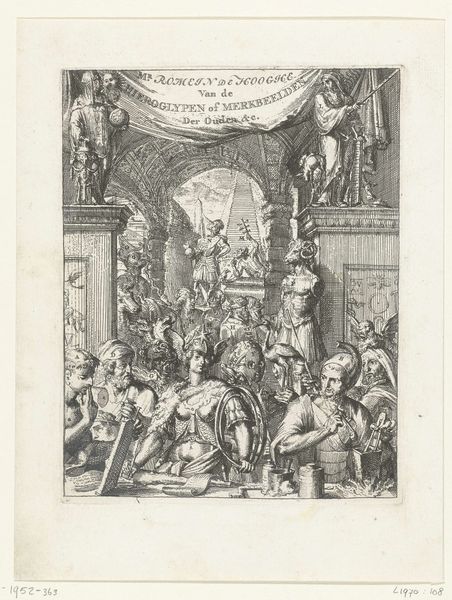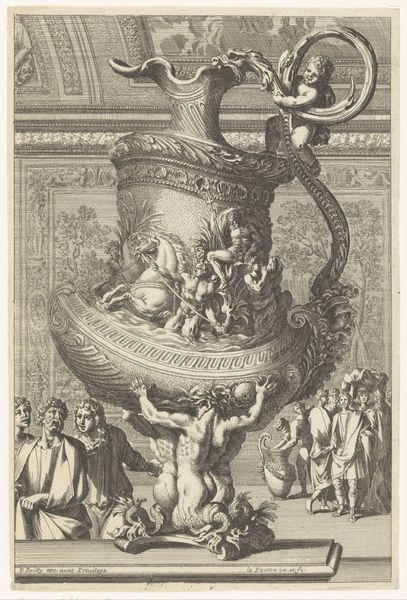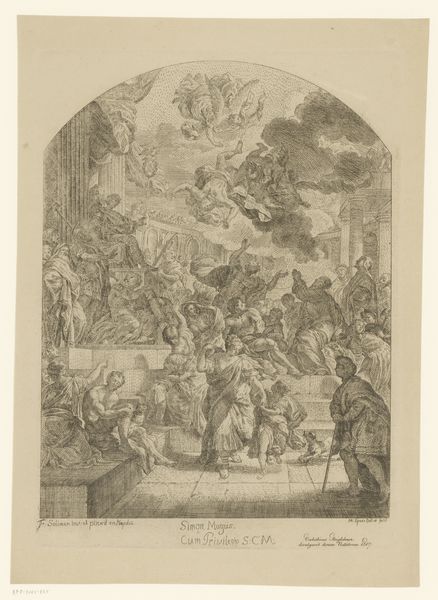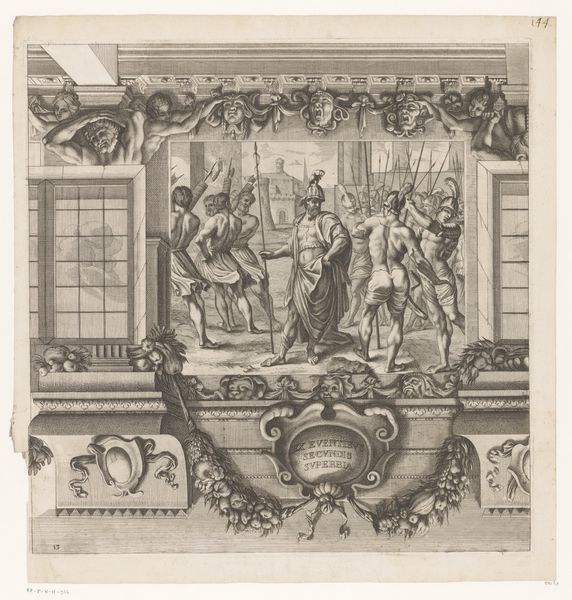
print, engraving
#
narrative-art
#
baroque
# print
#
old engraving style
#
figuration
#
line
#
history-painting
#
academic-art
#
engraving
Dimensions: height 117 mm, width 130 mm, height 232 mm, width 180 mm
Copyright: Rijks Museum: Open Domain
Editor: This engraving by Jacobus Baptist, made around 1698 to 1700, is titled "Maria Stuart overhandigt Willem III de commandostaf." The figures seem almost frozen, captured in this very formal, theatrical scene. How would you interpret the public role of this print in its time? Curator: This print functions as a piece of political propaganda, a visual argument legitimizing William III’s rule. Consider the moment depicted: Mary Stuart, a British monarch, handing the command staff to William. Baptist wants to emphasize a legitimate transfer of power, blessed from above, literally, by the angel at the top of the engraving. Who is included in this spectacle and who is omitted, do you think? Editor: I notice Neptune in the lower-left corner and then the figures on the lower-right look almost like onlookers; however, there's another character sprawled out on the ground! Is the print trying to portray different sides or reactions to the rule of William III? Curator: Precisely. The figure prostrate on the ground symbolizes those being defeated or those not accepting of William's rule. This image not only tells the story of succession but also suggests an intended public impact. Baptist uses established iconographic conventions – angels, Roman imagery, classically inspired architecture – to construct an image of power and legitimate authority. What kind of visual impact does this combination have, do you think? Editor: It really aims to communicate power and a strong message by including so many symbols! Seeing it in that historical and political context makes it far more interesting. Curator: Indeed! Understanding the image as a crafted political statement opens up further inquiry into the social forces at play and how images were used to shape public opinion.
Comments
No comments
Be the first to comment and join the conversation on the ultimate creative platform.
